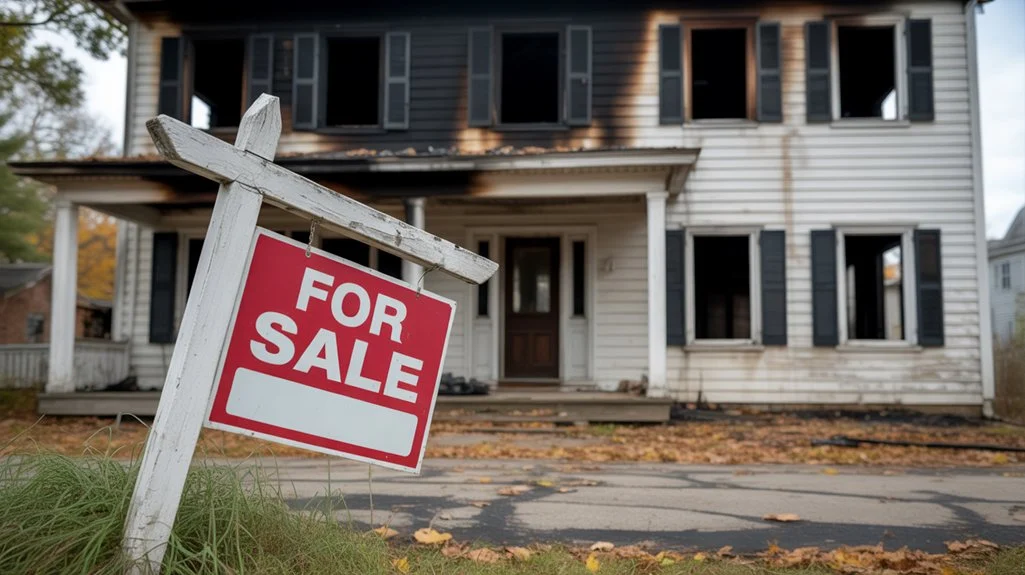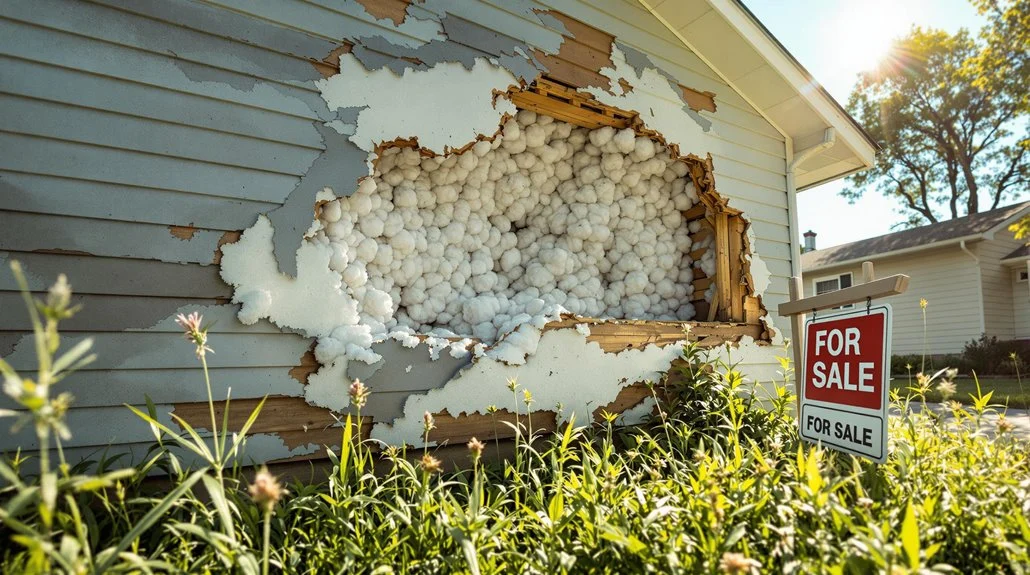"Selling distressed property can be a tricky process. It's not as simple as listing your house and waiting for an offer – there are many factors to consider before you put it on the market.
From understanding what makes a home 'distressed' to effectively marketing and closing the sale, this article will provide all the information you need to successfully sell your property in no time!
If you're looking to quickly and easily unload a distressed piece of real estate, then look no further. With experience-backed tips from industry experts, you'll learn how to accurately assess the condition of your property, attract buyers with savvy marketing techniques, and close the deal like a pro — so you can move on with life without worrying about that distressed property anymore.
What Is A Distressed Property?
Distressed property is real estate that has been abandoned, foreclosed on, or otherwise neglected. It's the kind of property you'll find at a steep discount and can be an attractive option for buyers who are looking to get more bang for their buck.
Basically, it’s any home or piece of land that needs repairs before being livable again. Distressed properties often have structural problems due to years of neglect as well as plumbing, electrical, roofing and other issues. That means they come with a lot of potential risks but also offer great opportunities if done right.
When buying distressed property, it pays to do your homework first so you know what kind of costs you may be facing in order to bring the house up to code. You'll need to factor those into the purchase price when negotiating because there could be unexpected expenses down the road.
Doing some research ahead of time will help ensure you're making a sound investment that won't leave you upside-down financially in the end.
Assessing The Condition Of Your Property
Okay, so you know what a distressed property is. Now it's time to assess the condition of your property. After all, if you don't know how bad things are, how can you fix them?
The first step in assessing the condition of your property is to take an honest look at its physical and structural integrity. Make sure there aren’t any obvious signs of neglect or deterioration like broken windows, water damage, mold growth, insect infestations, etc. Look for clues that point toward foundational issues such as cracks in walls or floors and uneven foundation settlement (which can cause doors and windows to stick).
Next up is reviewing the mechanical systems within your home — plumbing, electrical wiring, HVAC system(s), etc. If possible, have a professional come out and inspect these components to ensure they're up-to-date with current codes and working properly. It may cost some money upfront but it could save you thousands down the road by avoiding potential problems before they happen.
Now that you've taken stock of the physical structure of your home and its interior systems – it's important to consider the value of surrounding properties too. Do some research on recent sales prices within your neighborhood; this will give you an idea of where you should price your own property when it comes time to sell it.
Determining The Right Price
When it comes to selling distressed property, pricing is everything. You want to make sure you get the most out of the sale without leaving any money on the table. That's why it’s important to carefully consider what price your home should be listed at before putting it up for sale.
Here are a few tips that can help you determine the right price:
The first thing you need to do is figure out how much work will have to be done on the house in order for it to sell at market value. This includes things like replacing carpets and paint, making repairs or updates, and staging the home so potential buyers can envision living there themselves. Once you know what needs to be done, you'll have an idea of how much money needs to go into preparing the house for sale.
Next, research comparable homes in your area that recently sold and use their prices as a guide when setting yours. Take note of features those homes had that may not be present in yours such as upgrades or additional square footage – this will give you an even better sense of where your listing should fall compared with other similar properties in your neighborhood.
Taking all these factors into account will help ensure you're pricing your distressed property competitively while still getting top dollar for it.
Knowing exactly what kind of investment and effort goes into selling a distressed property, plus understanding current market conditions by researching comps, puts you in great shape when determining its list price – giving yourself a greater chance at success!
Finding The Right Buyer
Hey folks, here's the deal: Finding the right buyer for your distressed property isn't easy. But with a little bit of work, you can get it done!
First off, you need to make sure that whoever buys it is going to be able to handle all the repairs and renovations needed. That means they'll need some extra cash on hand or access to financing. You'll also want to make sure they're serious about buying—not just looking around for funsies.
The best way to find a qualified buyer is through word-of-mouth. Reach out to your friends and family who may know someone in the market or have connections who could help them locate a great investment opportunity. You should also look into local real estate agents and brokers; they might have leads that will point you towards potential buyers.
Once you've put together a list of interested parties, set up showings so they can walk through the property and see what kind of condition it's in. Make sure everyone knows the place needs work before any contracts are signed—that way there won't be any surprises down the road when it comes time to close on the sale.
And if everything looks good, then negotiate terms until both sides feel satisfied with their agreement!
Preparing For Showings
Now that you’ve found the right buyer for your distressed property, it’s time to prepare for showings. This is a critical step in closing a successful sale—here are some tips to help make sure things go smoothly.
The first step is to ensure all repairs have been made ahead of time and the home looks its best. Potential buyers should be able to imagine themselves living there without being distracted by minor issues like leaky faucets or peeling paint.
Clean up any clutter from the yard so it appears neat and inviting, then spruce up the exterior with fresh landscaping if necessary.
Inside, declutter and organize as much as possible before each showing. Remove personal items such as family photos or religious artifacts to create a neutral atmosphere where potential buyers can easily visualize their own belongings in the space.
If needed, hire a professional cleaning service or deep clean yourself to get rid of dust and dirt buildup before anyone steps foot inside. Taking these extra steps will help make your home stand out among others on the market!
Closing The Deal
It's time to close the deal on your distressed property! Now that you've taken all of the steps above, it's time to make sure everything is finalized and the keys are yours. Here's how to ensure a smooth closing process.
The first step in closing a distressed property sale is making sure you have all the necessary paperwork ready before signing anything. This includes any contracts or agreements between you and the seller, as well as other documents such as title insurance policy, proof of mortgage loan approval, and more. It might seem tedious now but having all these documents will save you headaches down the road.
Once all the paperwork is squared away and everyone involved has agreed with its contents, it’s time for each party to sign off on their respective portions.
Make sure both sides understand what they're signing up for – no surprises here!
After signatures are collected and verified by an attorney or notary public, then congratulations! You just closed on your new home – go celebrate!
Preparing For The Final Walkthrough
Alright, let's get the final walkthrough ready! This is a critical step in selling distressed property. It's important to check all systems and make sure everything is working correctly before you sign any documents.
First of all, you'll want to do a physical inspection of the property. Make sure there are no major issues that need to be addressed – like termites or water damage. Check for any safety concerns that might have come up since the last time it was inspected. Take notes if something needs repair – this could save you from possible lawsuits down the road.
Don't forget about checking out all of the appliances too! Test them one by one to make sure they're functioning properly, as well as taking a look at your plumbing and electrical systems. Having an inspector come out can also be a good idea just to double-check everything.
Once you've done these things, you should feel confident that you won't encounter any surprises when closing on the home sale.
In summary, selling distressed property requires careful preparation ahead of the final walkthrough. Inspecting both inside and outside the property with special attention paid to potential safety hazards is necessary prior to signing any documents. Additionally, testing each appliance along with inspecting plumbing and electric will give peace of mind when finalizing the transaction.
Conclusion
Buying and selling distressed property can seem like a daunting task, but it doesn't have to be. With the right approach, you'll be able to get the best price for your property while still finding a buyer that is willing to put in the effort required to make the home their own.
The key is knowing what condition your property is in, setting an appropriate price, preparing for showings and walkthroughs and closing out the deal as quickly as possible.
With my tips on hand, you'll be well-prepared to navigate this process with ease!
"







